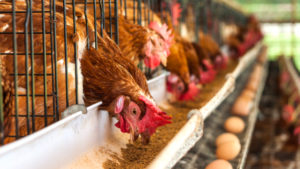Laying hens are chickens that are raised to lay eggs to supply eggs. Unlike broiler chickens, the main task of raising hens is to improve the quality of eggs and maintain or increase the amount of eggs produced, rather than improving the quality of chicken. Eggs are the main source of income for laying hens. Laying hen breeds should choose local chickens with strong constitution, strong disease resistance, strong feeding ability, good egg quality, high egg production rate, and coarse feeding, adapted to the local environment.
1. Strengthen daily management. Observe the spirit, appetite, and feces of the flock when feeding in the morning and evening. For those who are mentally ill, loss of appetite, and abnormal stools, further isolation and examination is required.

2. Adjust the flock properly. Discontinue production chicken, weak chicken, stiff chicken, have the chicken of serious evil habit, produce the chicken with short egg time, bodily form too big chicken, weight too fat or too thin chicken, with ill chicken seasonable eliminate, leave production performance good, constitution is strong, produce the chicken of egg normal.
3. Increase feed nutrition. After a long period of egg laying and hot summer, the chickens are already very tired. After the autumn, they should feed more animal protein feed, subsidize the chickens that have not been moulted to continue laying eggs, and promote the feathered chickens to grow into feathers. Resume production as soon as possible. Since the nerves of the chicken are very sensitive at this time, when adding a higher nutrient feed, it is necessary to slowly add a slow sprinkle to prevent the nerves of the chicken from being stimulated and the moults to stop production.
4. Reduce the impact of climate change, so that the microclimate in the house is not too large, reducing the temperature difference between day and night. For broiler chickens that are kept outside the house, when the temperature is too high during the day, the chickens should be driven to the shade of the trees or in the pergola. When the temperature is low at night, the chicken is driven into the chicken layer cages.